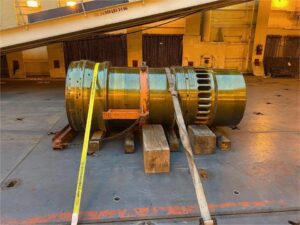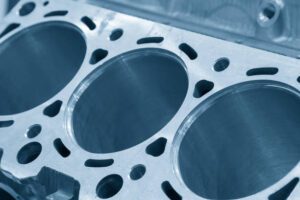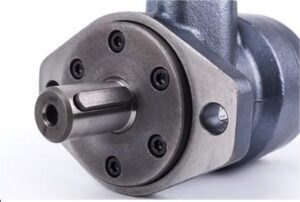There are multiple ship pipe fittings available in marine plumbing systems and they are utilized according to purposes and functions. You are in the right place to discover everything you need to know about these important marine fittings. Let’s dive in!
What are Marine Plumbing Pipe Fittings?
These are plumbing connectors that are used to unite numerous pipes of the same or various sizes, to regulate the flow, or to measure the flow underwater.
Several pipe fittings are available for distinct tasks and use, and they are made of various materials such as copper, iron, brass, PVC, and so on.
Marine Pipe fitting sizes are critical, and there are standard standards to adhere to. Most fittings have the same-sized apertures on both ends, however, other fittings have different-sized openings and serve as a transition from one size pipe to another.
Types of Pipe Fittings
There are numerous types of marine pipe fittings, and they play distinct roles in the entire pipping process. They are:
Ship Elbow Fittings
Elbows are used to reverse the flow direction between two pipes. Elbows are commonly offered in 22.5o, 45o, and 90o angles. If the pipes are all the same size, conventional elbows are used; otherwise, reducer elbows are needed.
Elbows are created from a variety of materials. These typically have female threads and can be repaired by butt or socket welding.
Boat Concentric Reducer
A concentric reducer, often referred to as a tapered expansion joint, is a fitting used to connect two pipes or tubes with varying interior diameters. To enable the passage of fluid or other substances on a boat, both tubes must share the same centerline or alignment.
Reducers can be produced using rubber, stainless steel, carbon steel, steel alloy, titanium alloy, copper, nickel, cast iron, brass, or other materials that have met the standards of the pipe industry. It is typically used in joining vertical pipes that need to be anchored for safety purposes during marine trips.
Concentric reducers are widely used in the oil and gas industry’s onshore and offshore operations, where there is a high volume of cargo movement and vapor recovery.
To achieve its objective of merging two pipes of differing diameters, the two ends of a concentric reducer have uneven diameters. Its smaller end connects to the smaller pipe, while the larger end connects to the larger pipe.
A concentric reducer is used to connect pipe or tube pieces on the same axis. When there is a difference in diameter between pipes, a concentric reducer is used.
For example, when a 1″ pipe transitions into a 3/4″ pipe, neither the top nor bottom of the pipe must remain level.
Seamless Carbon Steel Cap
Marine Pipe caps are used to stop fluid flow and protect pipe threads at the end of pipes. A seamless Carbon Steel cap is a sort of pipe fitting with the same purpose as a plug, the only difference being that the plug has male threads and the cap has female threads that screw onto the male thread of the ship pipe. These are available in a variety of materials, including rubber, copper, steel, and plastic.
Marine Expansion Joint Steel
These expansion joints, also known as movement joints, are flexible connectors that absorb ducting system movement caused by mechanical or thermal process changes. These Ship expansion joints are designed to absorb stress, reduce vibration, and absorb noise.
Ship expansion joints are also designed to accommodate huge movements while also reducing the force on the system. These are frequently used to support equipment misalignment.
These expansion joints are common in big cooling systems, compressors, pumps, suction valves, blowers, vacuums, and a variety of other applications.
They are simple to install and sturdy enough to sustain a wide range of pressures. To create superior-quality expansion joints, they use high-quality materials such as stainless steel, high-grade rubber, iron, brass, and many more.
Boat Union Joint Fitting
Boat unions are pipe fittings that use a socket to connect two pipes. They are frequently employed in high-pressure marine systems and offer numerous advantages over other pipe fittings.
A socket weld union is a steel or stainless steel fitting that is meant to connect two pipes at the same time. When properly installed, it consists of two halves, a male half and a female half, that fit together like two puzzle pieces to produce an airtight seal.
This style of union is commonly used in high-pressure marine systems and can handle pressures of up to 3000 psi (pounds per square inch). Socket weld unions have a wide range of industrial uses, ranging from marine water pipes to chemical processing plants.
In addition, they are employed in oil refineries, pharmaceutical factories, power plants, and food processing facilities. Socket weld unions are frequently favored over other types of pipe fittings for these types of projects because they produce an airtight seal with little danger of leaking.
Because of their ability to establish an airtight seal with minimum leakage, socket weld unions have many advantages over other types of marine pipe fittings.
They come in a variety of sizes and forms depending on the application, making them one of the most versatile solutions for industrial plumbing needs.
Socket weld unions provide a dependable solution every time, whether you’re searching for a way to connect two pipes at an angle or just a simpler way to unite threaded marine pipes without having to do any welding or soldering work.
Ship Tee Joint
A ship tee joint is a linkage between two parts that are roughly perpendicular to one another, generating two right angles that look like the letter T. This is due to the fact that one member is connected between the two ends of the other.
It varies from a corner joint, which is made by two members linked at one end to make a single right angle. Ship Tee joints can be formed using a variety of components, including structural members made of wood or metal, pipes or tubes made of concrete or plastic, and others.
A ship tee joint can be formed in a variety of ways. Materials can be adhesively bonded together, and a number of tee connections are available to link various sorts of members.
Members can also be joined using fasteners like nails or screws, or they can be notched to fit together like puzzle pieces. For increased strength and stability, a ship tee joint may be constructed utilizing numerous types of connections.
For example, ship steel studs can be bonded together using screws. However, metal pieces are frequently welded together to form a tee joint and can be joined using a variety of welding processes.
The fillet weld is the most typically utilized, with the cross-section of the weld being roughly a triangle form and two sides of the weld joined to the components being linked. In one or both corners of the ship tee joint, a fillet weld might be used.
The end of the vertical element may be beveled or grooved on one or both sides to provide for greater weld penetration and joint strength.
The T-shaped connector into which tubes or pipes are put to form a tee joint is also known as a tee joint in marine plumbing applications. This connector can be used to direct fluid flow in one direction or the other, divide it into two directions, or combine flow from two streams into a single stream.
To control the flow of fluid via the joint, a valve can be employed. Tee joints have a wide range of applications. Tee joints are used extensively in the residential, commercial, and industrial construction of objects like buildings and bridges to link structural parts.
Tee joints are used in household and commercial indoor plumbing, outdoor irrigation systems, and other plumbing systems. They are made of copper pipes, polyvinylchloride pipes, or other sorts of members. Another use for which tee joints can be employed is ventilation.
When conveying liquids or gases through a marine tee joint, adequate sealing of the joint is critical to prevent the material from seeping out at any of the points of connection.
Marine Flange fitting
Marine steel flanges provide for simple cleaning, inspection, and customization. They are often circular in shape, but they can also be square or rectangular.
The flanges are bolted together and threaded or welded to the piping system. They are designed for specified pressure ratings of 150lb, 300lb, 400lb, 600lb, 900lb, 1500lb, and 2500lb.
A marine flange is a plate used to cover or close the end of a pipe. This is known as a blind flange. Flanges are hence interior components that are utilized to support mechanical parts.
Due to the structural integrity of the application in which the flange will be used, each marine flange material must be assessed for its use prior to ordering.
Currently, the most frequent materials for marine flanges are carbon steel, alloy steel, stainless/duplex steel, nickel alloys/superalloys, and titanium. However, flanges in aluminum, copper, polypropylene, and other materials are also available.
Marine Sleeve Steel
The use of marine sleeve steel with a modulus that matches the base pipe, as well as the steel’s homogeneous isotropic characteristics, allows for axial calculations and the examination of strain-related concerns. The thin-layer steel laminated design achieves extraordinarily high fracture toughness while also promoting inherent mitigation of potential future third-party damage.
The resulting system has proved the need for trustworthy engineering data and analysis for marine pipeline repairs, as well as usability for the augmentation of existing pipes without flaws.
Marine Pipe
Marine steel pipes have numerous applications, but their primary function is to transport liquid or gas from one location to another. They are utilized in both large-scale transportation systems buried beneath cities and smaller piping systems found in homes and businesses.
They are also employed on construction sites and in industrial production operations. Steel pipe applications are nearly limitless, and this astonishing variety is due entirely to the strength and flexibility of steel as a structural element.
Seamless steel fittings, on the other hand, do not have a welded seam. Extrusion is used to create the tubing, which is drawn from a solid stainless steel billet and extruded into a hollow form.
Furthermore, for high-pressure marine pipe systems, seamless stainless steel is preferred, and the material is commonly used to make pipe fittings such as bends, elbows, and tees. Moreover, ASTM A312 is the most prevalent marine stainless steel specification.
Now that you are aware of the different types of marine pipe fittings, make it count toward improving your decision-making around marine plumbing and steel pipe fittings. Good luck!






